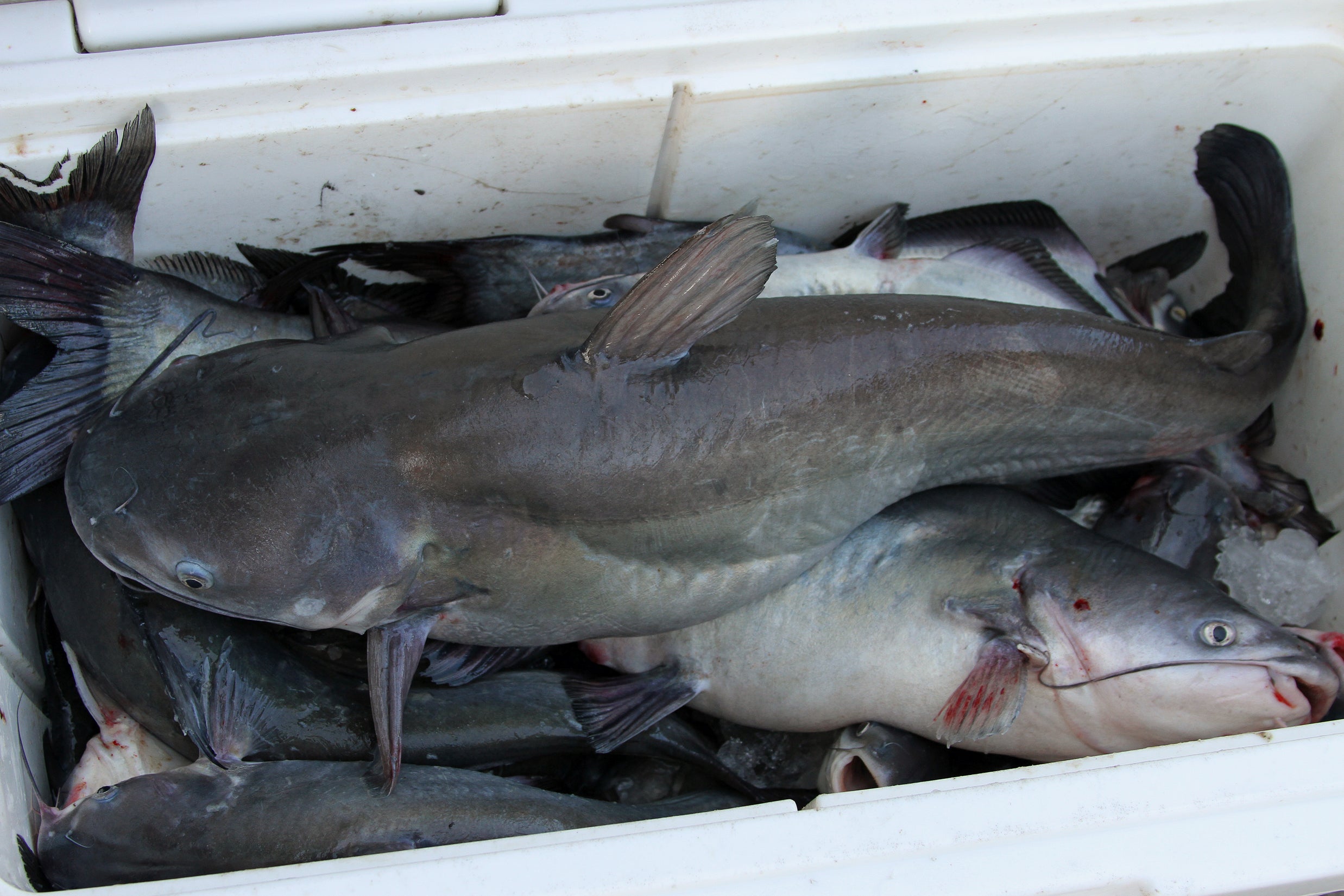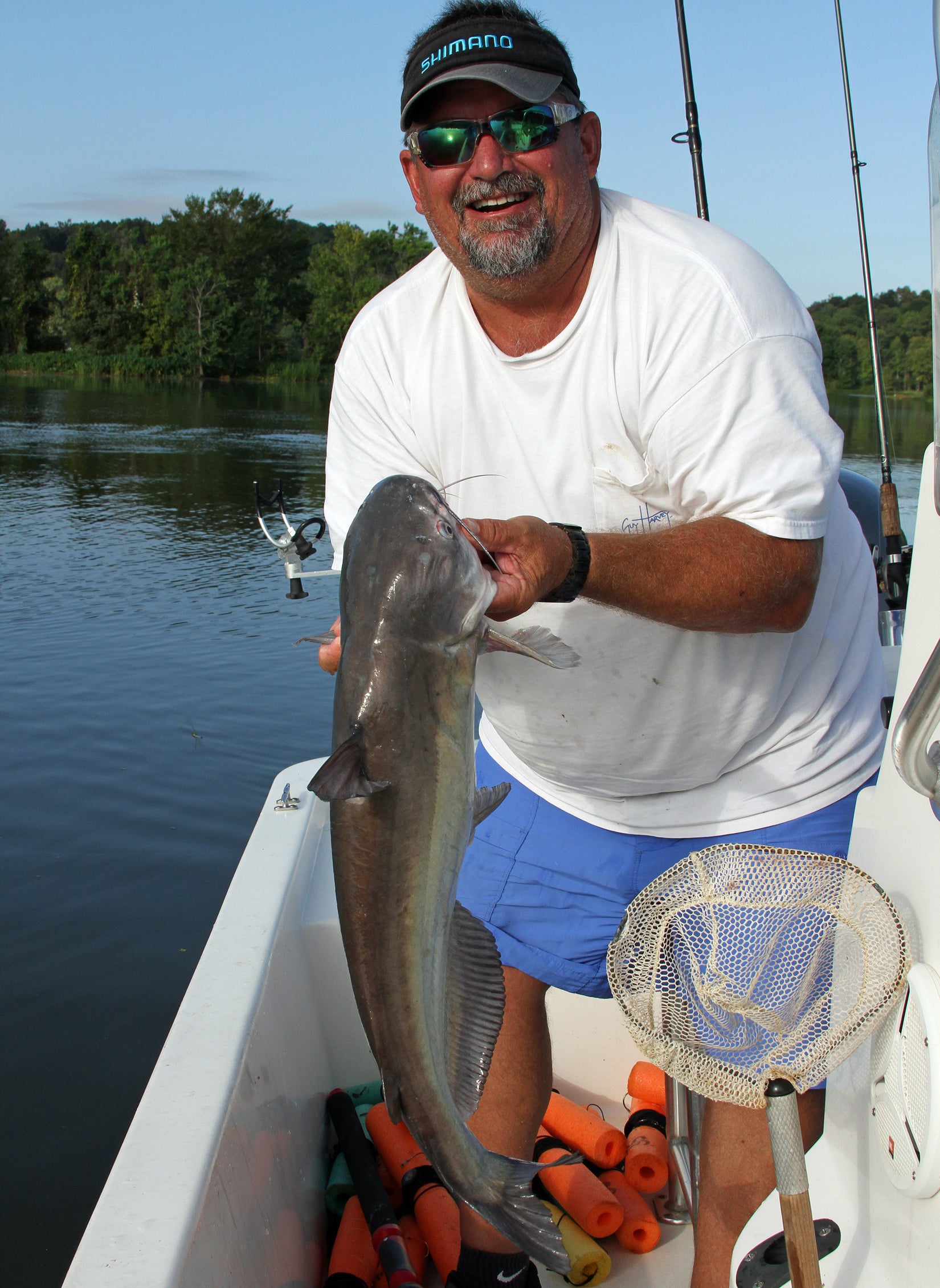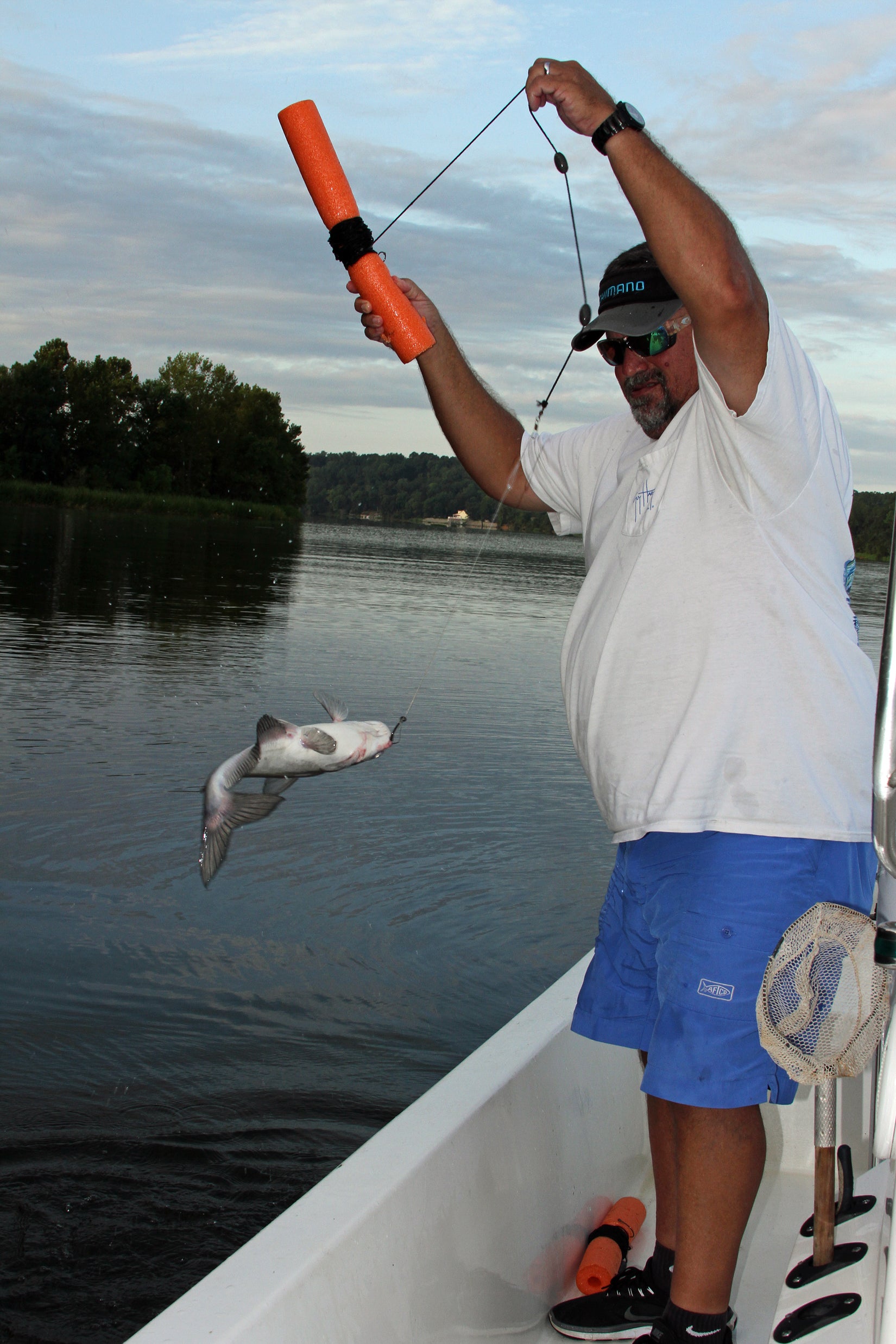By DAVID RAINER, Alabama Department of Conservation and Natural Resources
The ripples emanating from the sides of the 2-foot-long piece of pool noodle was just what Joe Dunn hoped to see.
It meant there was something attached to the line that dropped some 15 feet into the murky waters of the Alabama River near Camden.
During the dog days of summer, this fishing tactic is what Dunn prefers because the heat makes it unbearable to crappie fish in hopes of catching seven or eight keepers. The same goes for bass fishing.
So, Dunn turns to the plentiful catfish that inhabit Alabama’s many rivers, and lets the jugs, or noodles in this case, do the fishing while he enjoys a restful night of sleep. If he’s ambitious, he’ll run the 20 or so jugs during the night. If not, he’ll head out at dawn to find out what’s been biting.
Catching bait might be the only real work involved in “jug” fishing.
“The predominant bait on Millers Ferry is going to be shad that you catch with your cast net,” Dunn said. “But skipjacks (members of the herring family) are another excellent bait. It’s a little harder, sometimes, to catch skipjacks. Most people use Sabiki rigs and go behind the power house to catch the skipjacks. But sometimes there’s another way to catch them. If you’re on the river, sometimes you will see skipjacks chasing little river minnows or small shad. You ease over into that area, and when they come up to feed, you throw your cast net and load it up with skipjacks. We did that just the other day with the cast net.
“The key is good, fresh bait.”
Dunn said if you’re planning to do a little tightlining for catfish before you head back to camp to get out of the heat, the skipjacks will stay alive for a little while in the livewell. If you see a couple floating in the livewell, it’s best to get them all out, put them in a plastic bag and get them on ice before they degrade.
Dunn says the best way to deal with leftover skipjacks is to freeze them as soon as possible.
“Freezing skipjacks in water doesn’t work well,” he said. “When you thaw them out, they’re all mushy and just don’t work well. I found out if you put them on a cookie sheet and freeze them individually before putting them in freezer bags, they work a lot better. That’s a big plus.”
When Dunn is targeting flathead catfish, he tries to catch small bream to bait the jugs. Flathead, also known as yellow cats, prefer the bait to be live and swimming.
“If you’re looking for a mess of small fish for a fish fry, just use those small shad and thread them on the hook. If you’re keying on bigger fish, you’re better off with a live bait, even your bigger blue cats like live bait.”
Most people tend to shun keeping a larger blue cat because the flesh is not as suitable for consumption as any size flathead. However, Dunn said large blue cats can be delicious if they’re prepared correctly.
“The key is learning how to clean them to where they taste good,” he said. “It’s best to bleed them. I cut the tail off and throw them in the splash well. When I clean them, I get all the red meat off, and then I soak the meat in an ice-water slush. You soak it and get all the blood out, changing the water when needed to get that meat snowball white.
“Then you fry it, and it’s good. I’ve had people tell me it was the best blue cat they’ve ever eaten.”
Now Dunn is not saying he can make big blue cats taste like a flathead, which doesn’t seem to lose any appeal to the palate the larger the fish gets.
“I fried some flathead for my brother, Bubba, and he kept asking me, ‘What did you do to this fish? What did you do to this fish?’” Dunn said. “I didn’t do anything to it. It was just the fish. The flathead is just the primo catfish catch out of the river.”








